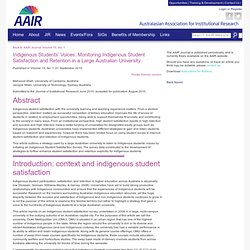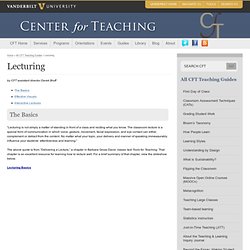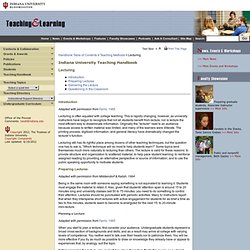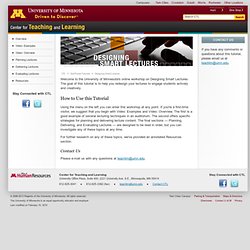

Grading Papers with Word 2010 and Windows 7 (cc) Bloomingapps. Learning-Design-Process. LearningStrategies. Strategies for Online Teaching. Science Magazine: Sign In. 15-1 Indigenous Students Voices: Monitoring Indigenous Student Satisfaction and Retention in a Large Australian University. Back to AAIR Journal Volume 15, No. 1 Published in Volume 15, No. 1, 01 September 2010 Printer friendly version Mahsood Shah, University of Canberra, Australia Jacquie Widin, University of Technology, Sydney, Australia Submitted to the Journal of Institutional Research June 2010, accepted for publication August 2010.

Indigenous student satisfaction with the university learning and teaching experience matters. This article outlines a strategy used by a large Australian university to listen to Indigenous students’ voices by initiating an Indigenous Student Satisfaction Survey. Indigenous student participation, satisfaction and retention in higher education across Australia is abysmally low (Hossain, Gorman, Williams-Mozley, & Garvey, 2008). This article reports on an Indigenous student satisfaction survey undertaken in 2008 in a large, multi-campus university in the outlying suburbs of an Australian capital city. The issue of student satisfaction underpins the delivery of higher education.
CREATING EFFECTIVE PRESENTATIONS TEMPLATE. Lecturing. By CFT assistant director Derek Bruff The Basics “Lecturing is not simply a matter of standing in front of a class and reciting what you know.

The classroom lecture is a special form of communication in which voice, gesture, movement, facial expression, and eye contact can either complement or detract from the content. No matter what your topic, your delivery and manner of speaking immeasurably influence your students’ attentiveness and learning.” The above quote is from “Delivering a Lecture,” a chapter in Barbara Gross Davis’ classic text Tools for Teaching. See also Davis’ chapter, “Preparing to Teach the Large Lecture Course.” When planning a lecture, keep in mind that you have control or influence over several elements of your classroom: Visual Message – The slides and other visual aids you use can either complement or confuse your verbal message, depending on how you design them.
Effective Visuals Keep it simple. Interactive Lectures For additional ideas, see the following: Video - How to Create a Padlet Wall for Your Classroom. TFTlectures. Lectures play a vital role in teaching.

There will always be a place for lectures in the curriculum -- to give technical material or factual information, to provide structure to material or an argument, to display a method or example of how one thinks in a given field, or even to inspire and motivate students to explore further. At the same time, it often enhances both your presentation of the material and students’ learning when students are able to participate in some way.
When students engage actively with material, they generally understand it better and remember it longer. Asking for student participation highlights the distinction between faculty covering material and students learning it. Student participation often results in covering less material during a semester. Note: If you decide to invite student participation in lectures, consider beginning with the very first lecture, when norms and expectations for class are being established. Beginning the lecture (or course) 1. 2. Teaching and Learning at Indiana University, Bloomington. Handbook Table of Contents > Teaching Methods > Lecturing Introduction Adapted with permission from Farris, 1985.

Index. Welcome to the University of Minnesota's online workshop on Designing Smart Lectures.

The goal of this tutorial is to help you redesign your lectures to engage students actively and creatively. How to Use this Tutorial Using the menu on the left you can enter this workshop at any point. If you're a first-time visitor, we suggest that you begin with Video: Examples and Video: Overview. The first is a good example of several lecturing techniques in an auditorium.
For further research on any of these topics, we've provided an annotated Resources section. Contact Us Please e-mail us with any questions at teachlrn@umn.edu. Contact Us If you have any comments or questions about this tutorial, please email us at teachlrn@umn.edu. 7. 149130. Creating and assessing positive classroom learning environments.
When you walk in the door of certain classrooms, you can feel "it.

" The classroom has a positive atmosphere and you can sense that this is a good place to be. What defines this positive classroom environment? Can "it" be described and assessed? When teachers feel that they have created classroom environments that positively engage students and optimize their learning, teachers' self-efficacy soars and their classroom has "it. " Teachers can take certain steps to create those "friendly" environments in which they and their students can thrive. This article presents a brief introduction to the field of learning environments and describes a learning environment questionnaire--called What Is Happening in This Class? Learning Environments A great deal of research and evaluation in education has been heavily dependent on measures of academic achievement and other learning outcomes; however, these measures cannot provide a complete description of the educational process.
Conclusion References. TheDispositonstoTeach.